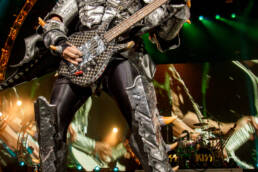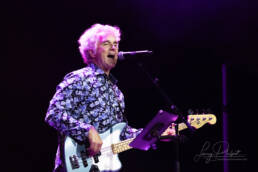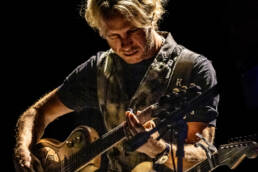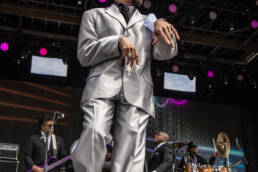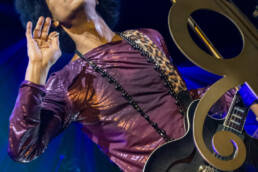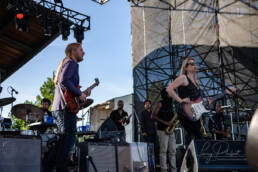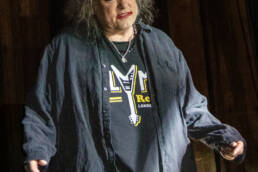KISS: The Rock ‘n’ Roll Warriors in Greasepaint
Hall of famers, KISS, used my entire gallery on their websites, and they remain there to this day. KISS was inducted into the Rock Hall of Fame in 2014, when these photos were taken.
The Fire That Forged the Legend
Imagine a gritty New York City street in the early 1970s, where four misfits dreamed of something bigger than the dive bars and dingy clubs they haunted. For Gene Simmons, Paul Stanley, Ace Frehley, and Peter Criss, music wasn’t just a career—it was a rebellion against normalcy, a chance to become larger-than-life gods of thunder. The spark? A shared craving to escape the ordinary and conquer the world with sound and spectacle. Simmons once said they wanted to be “the band we never saw growing up,” one that fused the raw power of rock with the drama of theater. That hunger—to shock, to awe, to dominate—ignited KISS, a band that didn’t just play music but waged war on the mundane.
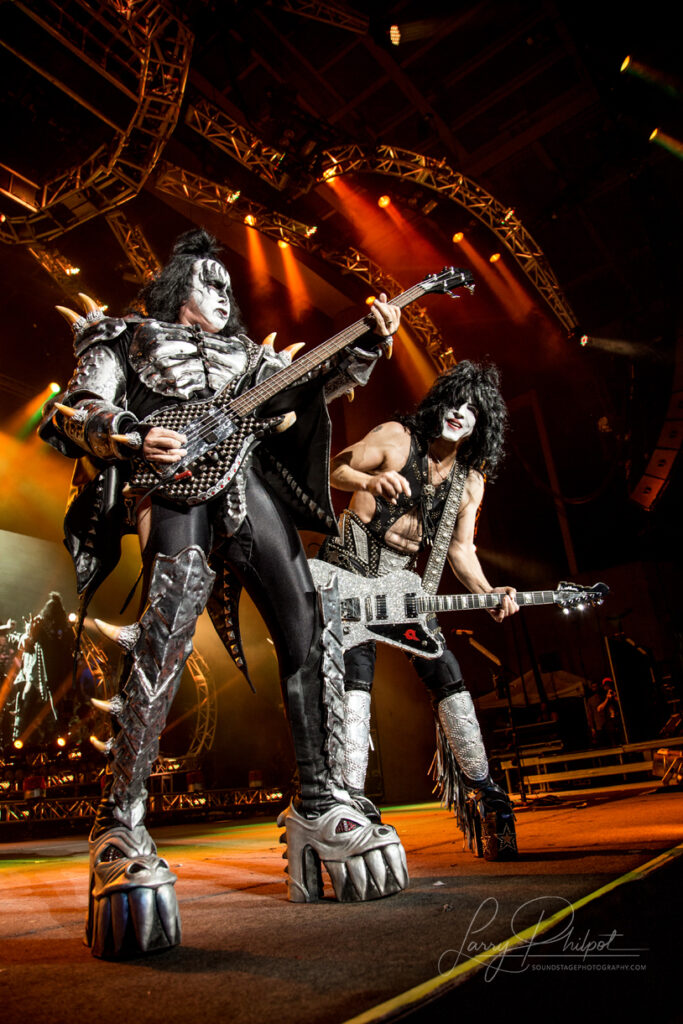
The Faces Behind the Paint
KISS’s story begins with its architects: Gene Simmons (born Chaim Witz in Israel, 1949), a fire-breathing bassist with a flair for the outrageous; Paul Stanley (Stanley Eisen, born 1952 in Queens), a starry-eyed guitarist with a golden voice; Ace Frehley (born 1951 in the Bronx), a spacey lead guitarist with a cosmic edge; and Peter Criss (George Peter John Criscuola, born 1945 in Brooklyn), a drummer with a jazzy soul and a cat-like growl. They weren’t born rock stars—they were self-made, stitched together from the scraps of failed bands and dead-end gigs.
Simmons and Stanley met in 1970 through the ashes of their band Wicked Lester, a soft-rock outfit that flopped before it flew. Hungry for something louder, they recruited Criss via a classified ad and Frehley after spotting his audition swagger. By 1973, KISS was born, their faces painted in black-and-white warpaint—Simmons as the Demon, Stanley the Starchild, Frehley the Spaceman, Criss the Catman. It wasn’t just a gimmick; it was armor for the battle ahead. They signed with Casablanca Records in 1973, dropped their self-titled debut in ’74, and spent the next decade building an empire of sound and fury.
Beyond the original four, KISS has seen lineup shifts: Eric Carr (drummer, 1980-1991), Vinnie Vincent (guitarist, 1982-1984), Mark St. John (guitarist, 1984), Bruce Kulick (guitarist, 1984-1996), Eric Singer (drummer, 1991-present), and Tommy Thayer (guitarist, 2002-present) have all worn the paint. Through marriages (Simmons to Shannon Tweed, Stanley to Erin Sutton), kids, and solo ventures, they’ve stayed tethered to the KISS legacy, a testament to their unbreakable bond with the fans—the KISS Army.
The Career That Rocked the World
KISS’s journey is a saga of triumph, turmoil, and theatrical excess. It started with KISS, the only band name that mattered, though its roster evolved. The classic lineup—Simmons, Stanley, Frehley, Criss—built the mythos with albums like Hotter Than Hell (1974) and Destroyer (1976). Their live shows, with fire, blood, and levitating drum kits, made them legends, cemented by the 1975 double-live album Alive!—a game-changer that turned slim sales into a goldmine.
Frehley and Criss exited in the early ‘80s, strung out on fame and substances. Carr and Vincent stepped in, ushering in the unmasked era with Lick It Up (1983), a pivot to MTV-friendly glam metal. The ‘90s brought reunions and farewells—Frehley and Criss returned for a blockbuster 1996 tour, only to drift again. Thayer and Singer solidified the modern lineup, keeping the machine roaring into their 2023 “End of the Road” finale at Madison Square Garden.
Collaborations? They’ve jammed with Garth Brooks, Tom Morello, and even Lady Gaga (Simmons produced her early demos). Relationships? Simmons’s playboy rep (claiming thousands of conquests) and Stanley’s quieter romances kept tabloids buzzing. Onscreen, KISS starred in the campy KISS Meets the Phantom of the Park (1978), popped up in Detroit Rock City (1999), and voiced Scooby-Doo! and KISS: Rock and Roll Mystery (2015). Simmons’s reality show Gene Simmons Family Jewels (2006-2012) peeled back the paint.
Awards piled up: 30 gold albums, an MTV Video Music Award for “Psycho Circus” (1998), and a 2014 induction into the Rock and Roll Hall of Fame—though Simmons griped about the delay. Their biggest hits?
- Rock and Roll All Nite (written by Simmons and Stanley) became their anthem, peaking at No. 12 on the Billboard Hot 100 in 1975.
- Beth (penned by Criss, Stan Penridge, and Bob Ezrin) hit No. 7 in 1976, a tender ballad amid the chaos.
- I Was Made for Lovin’ You (Simmons, Stanley, Desmond Child) danced to No. 11 in 1979, flirting with disco.
- Detroit Rock City (Stanley, Ezrin) never charted high but remains a fan-worshipped classic.
Controversy? Oh, they’ve had their share. The 1970s saw rumors of satanic messages in their name (it’s just “KISS,” folks). Simmons spitting “blood” (a mix of yogurt and food coloring) freaked out parents. Their 1980s unmasking pissed off purists, and a 1999 concert cancellation in Salt Lake City over “offensive content” sparked lawsuits. In 2023, their avatar-driven “future” plans post-retirement stirred debate—genius or gimmick? KISS never cared; they just kept rocking.
The Legacy of the Painted Kings
KISS didn’t just play rock—they redefined it, turning concerts into carnivals and fans into a legion. From scrappy New York dreamers to global icons, they’ve sold over 100 million albums, proving spectacle can outlast skepticism. Their final bow in 2023 wasn’t an end but a torch passed—to holograms, to history, to the KISS Army still chanting their name. Catch their spirit live in memory, and you’ll feel the fire that started it all, burning eternal.
